#plants environment hydroponics
Text


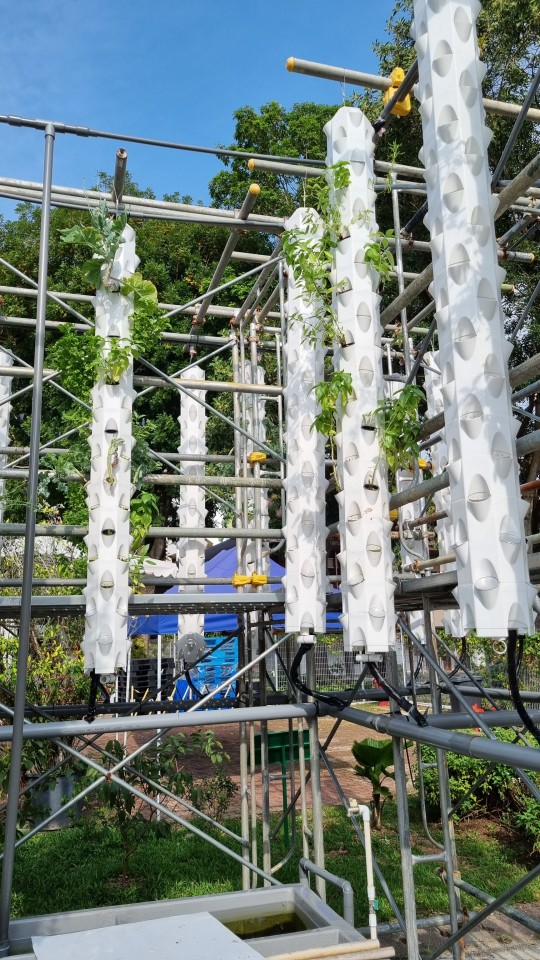



Some pics from my visit to an urban farm :)
Showcasing aeroponics + aquaponics (first 5 pics) and hydroponics (last pic) -- sustainable food production methods and alternatives to traditional farming!
A little presentation my group made about it, under the cut:

(company name censored oop)
For the DIY Hydroponics - I have a mint plant growing in water (+ nutrient solution, the hydroponics system) at home now :D
#this was for a 3-week (? i think) course related to the environment sector#i had to draw those red diagrams and i cANT ART but they turned out okay#aa it was so fun i miss the times when the curriculum didn't start yet#my posts#look at the cute little culantroooo#hydroponics#aquaponics#aeroponics#plants#plantblr#urban farming#got distracted and accidentally posted this too early while editing a photo LOL#😭 anyways it's posted
15 notes
·
View notes
Link
A 12 pot hydroponic system allows you to grow multiple plants simultaneously in a controlled environment. This setup is ideal for optimizing space and maximizing yield.
0 notes
Text

#Hydroponics Photos#Indoors Photos#Agriculture Photos#Beauty Photos#Blue Photos#Built Structure Photos#Construction Frame Photos#Corridor Photos#Craft Photos#Crop - Plant Photos#Environment Photos#Farm Photos#Glass - Material Photos#Greenhouse Photos#Healthy Eating Photos#Horizontal Photos#Light - Natural Phenomenon Photos#Modern Photos#No People Photos#Organic Photos#Organic Farm Photos#Photography Photos#Photosynthesis Photos#Pipe - Tube Photos#Plant Photos#Plantation Photos#Salad Photos#Season Photos#Seedling Photos#Thailand Photos
0 notes
Text
Confident Botanist Helps Your New House Feel Like Home | Audio Rp

Confident Botanist Helps Your New House Feel Like Home | Audio Rp | M4A
you know about the pH levels in your soil, right? (script and link to ao3 under the cut :))
Read it Here on ao3: https://archiveofourown.org/works/57992941
Hey, how can I help you? Woah, woah, sorry, I didn’t mean to startle you, man! [chuckle] You just kinda had this look on your face like you wanted some help, but didn’t want to ask or maybe didn’t know who to ask?
Well you’ve been stuck in the doorway a while now, and looking around aimlessly. So to me , that looks like maybe you wanted some help. I mean, hey, feel free to tell me to kick rocks, man, but if you want some help, I’m Raleigh and I’ll be in the hydroponics station over that way. [footsteps begin to fade away, then pause, and grow louder again]
Oh , so you do need help? Chill, I’m just messin’ with you. [quiet] No offense, but I could kinda tell you weren’t from here. Well, for one, you don’t sound like you’re from Cali at all. I’m feeling maybe somewhere out east? Maybe one of the Carolinas or Tennessee, but I wouldn’t bet any further north than that. And you don’t have that California tan yet. Unless the sun doesn’t particularly agree with you? Hey, rain’s a vamp’s favorite weather. Relax, relax, I know you’re magic. Don’t need to look around like that either. You’re the only customer I’ve had all day. Yeah, no. I’m a freelancer, I’m just pretty heavy handed with my earth magic. It was always my favorite growing up. And you are? Oh, I meant what kind of magic user are you, but sure, nice to meet you! Freelancer too? Uh, you sure? You feel a little, I dunno…different? And your eyes… Okay, dude, I’ll drop it [small sound of uncertainty, beat of silence] .
Uh, anyways, I’m sure you didn’t come here to have me questioning your magical abilities [chuckle] . So, right, uh, new in town, I’m guessing you’re looking for some house plants to deck out the new place? Well, you should know that DAMN doesn’t allow real plants in the dorms. I know almost no one follows that rule, but it’s there. How’d I know you were going to DAMN? You’ve got the patch on your bag, dude. And there’s not much draw here for magical folks beyond the Academy. [Shuffling noise] Not living on campus? Are you a transfer student, then? I know they make the freshmen live in dorms. Something about immersing them in an educational environment? I dunno. When I was a freshie, I was right out of high school and I figured freshman year at college, albeit magical college, was the perfect time to start getting blackout drunk nightly and completely ignoring my studies. I think I spent maybe a night a week in my own dorm? Other than that I was passing out in bushes outside the R.M. Estevez Building on the complete opposite side of campus, or getting, uh, busy , in other people’s dorms. [Laughter] Hey, I might not be able to look at Pink Whitney without gagging anymore, but I met my boyfriend that way. You from McKinley? Ah, Borden!
Wow, sorry for that tangent. So [clap] new place, looking for plants. Do you have any experience with keeping plants, or gardening, or anything like that? No? No worries, man, I know exactly where to get you started. [Footsteps] So, some pretty easy plants to start with are succulents. Not a lot of maintenance is needed, just sunlight and some water every so often will get you a long way. This section right here is probably where you’re gonna wanna start. What’s your lighting situation looking like at home? You’re gonna be hard-pressed finding an apartment in the city that gets a significant amount of natural light, but do you have any big windows? Or areas that get more sun than others?
Oh, not an apartment? I mean, you can’t be any older than me and you’ve already got a mortgage? [Light punching noise] I’m impressed, dude! So, not a mortgage? Oh, you inherited it! Still impressed honestly. It’s hard getting property in this day and age, no matter how it comes to you. Especially if it’s already completely paid off. Though, I’m sure your gramps probably bought it for like dollar fifty back in his day, am I right?
You’ve got an entire sun room? That is so sick, man. I’m sure my apartment would look less like a jungle and more like a place where people live if I had one of those. Looking to put it to good use? Succulents are definitely a good choice for full sun. Aloe is pretty low maintenance and good to keep around. Obviously aloe gel is good for sunburns and skin care in general, but I’ve seen people use it for other stuff too. The lady who does my mom’s eyebrows uses it to soothe the skin after waxing. Uh, [footsteps] string of pearls is a really unique looking plant. I think they’re just adorable [chuckle] .
Beyond succulents and cacti, if they aren’t really your thing, pretty much any palm will do well in the sun. Obviously not full trees since you’re looking to fill a room [laughter] , but there are some smaller palms and similar plants that will do well in your sunroom. Areca palm will definitely take up some room, if that’s what you’re looking for. They grow to be about six feet tall, or more, and they’ll spread pretty far. [Footsteps] Ponytail palm is another weird lookin’ one, but it’s pretty chill. Sago palm is pretty slow going, if you’re looking to ease into being a plant parent [chuckle] . It’s a cute little guy, though, won’t get much bigger than this.
If you’re looking for a functional indoor garden, you could always go for [footsteps] herbs! Those’ll be a little more picky as they tend to shrivel from time to time, but if you keep a close eye on them and take care of them, it shouldn’t be too much work. You could easily keep some basics like basil, oregano, thyme, cilantro, etcetera, etcetera. The window above my kitchen sink has been turned into my herb garden [chuckle] . Which is really helpful when my boyfriend is cooking and I forgot a couple things at the store. Which, uh [clearing throat] totally never happens.
Oh, you’re uh, handing me your card! [Pause] Go nuts? [Chuckle] I don’t know if you really know what you’re asking for here, pal. ‘Go nuts’ is a pretty arbitrary phrase and I can really, uh, go nuts , when it comes to plants and spending money on plants. [Lengthy pause] Okay, so no limits on price, do what I think is best? Ooh ho ho [laughter] you’re really putting your life in my hands! Let me go grab a pallet cart. [Quick footsteps, Raleigh’s voice sounds further away] Do you have a picture of the room you’re trying to fill, man? I gotta at least somewhat know what I’m working with! [Voice is closer again] Okay, okay, I see what you’re working with, here.
[Sound of small wheels on pavement, rustling of foliage] Let’s start you with a couple of these [sound of effort] areca palms to fill those corners and work further into the room. [Footsteps] Then, we’ll go for these [sound of effort] snake plants and fiddle leaf fig for some variation. And we’ll do some of these hibiscus plants! [sound of effort] They do great in sunlight and they’ll add some color and flowers, obviously. You got a preference on color? No? Cool. And I’ll grab you some of these moon cacti, again for color, but they’re prickly, like you!
[Footsteps, Raleigh’s voice gets further away again, he continues rambling about plants] [Sound of terracotta being lifted from a shelf] What’s up, bud? [Voice comes closer] Oh that? That’s hens and chicks. Cute name right? You’ll start with just one central plant, the hen, then it grows like crazy and you get the little ones, the chicks, surrounding it and spreading out. This one’s got some growing to do before it gets any chicks. It’s still just a sprout. Aw, oh my god, just like you! You’re just a chick now, but once you get started at school, you’ll have tons of little friends surrounding you and you’ll all grow together! [Cooing] Aw, don’t look so grumpy, Sprout. If your new hoard feels your bad attitude, they won’t grow well! Then you’ll have to come see me again [clicks teeth] .
Tell you what, this little lady is on the house, but you have to take good care of her if you want any chicks. Let’s get you checked out and get your new hobby loaded in the car. Uh, yeah. While you were staring down this hen I rounded out your order. Most of these should be pretty easy for a beginner, such as yourself [footsteps] but, uh, if you have any issues, of course call me. I’m literally a plant doctor [chuckle] . Oh right, my number! Well, here’s my card, but gimme a second. [Pen clicking, scribbling] That’s gonna be my personal cell on the back there. You’re more likely to get a hold of me that way. Especially outside of business hours.
Yeah, no, feel free to call me whenever! I gotta know how my newest client’s sunroom turns out! Besides, I have a feeling I’ll miss that grumpy face of yours, Sprout. Speaking of which, like I said, let’s get you checked out and then we’ll get this garden crammed into your car! Ooh a truck! Nice! You came prepared! Still I bet you weren’t expecting to leave with this many plants… [Voice fades out].
#redacted asmr#redacted audio#redactedverse#redacted fandom#redacted headcanons#oops new character#oops new story#i really like raleigh a lot#hes so silly#hes so babygirl#i’m really proud of this#:)
21 notes
·
View notes
Text
latest attenborough (planet earth iii - ep7 humans) was great as always but i found the last few minutes incredibly disappointing. he was talking about how rainforest is burned down to make land for cattle and soy, BUT THEN showed some super hi-tech hydroponic farm and acted like this was somehow better for the environment... and then urged everyone to eat a 'plant-based' diet...
#utmost respect to vegetarians but i DESPISE the term 'plant-based' yeah... manufacturing-plant based#im honestly so tired of saying it: soy and cattle farming are so intimately connected these days they could not exist as separate industrie#and it was 'for cattle and soy to feed them' he said. smh... that soy goes into the mouths of vegans first; the leftovers are fed to cattle
24 notes
·
View notes
Text
Closing Loops in Soilless Gardening - Hydroponics and Aquaponics
What is the future of food production going to look like? Is the projected 10 billion people in 25 years, out of which two thirds will live in cities, going to require us to convert every square meter of arable land into intensive mono cultural farms? Please don't let that be true! There HAS to be some alternative. Fortunately, there are several. Two of them are different ways of growing plants without soil, a radically new method, which may be most appealing to urban food production.

image source
Hydroponics: Growing Plants in Water
When it comes to growing large amounts of food on a small area efficiently, hydroponic systems are often brought up as a solution. And the reasons sound pretty convincing: An efficient hydroponic farm uses 90% less water, and can yield 3-10 times the amount of produce per area, with 7-14 growth cycles in a year. IMPRESSIVE! But before getting too excited, let's not forget: the devil is in the details! It's worth looking into under exactly what conditions those plants grow, being fed by what light, and most importantly which nutrients, and where they come from.
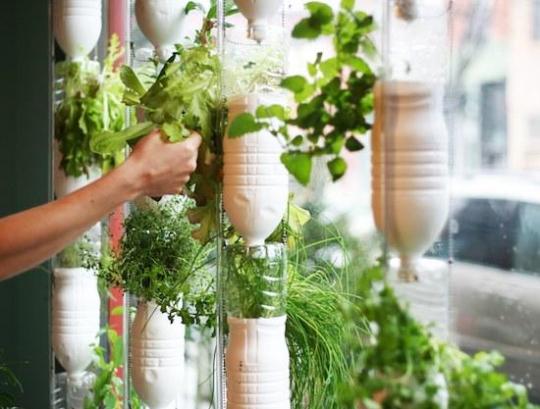
image source
The basic concept, however, of growing plants vertically, in mostly water, with some kind of substrate, such as clay balls or vermiculite, is actually a pretty nifty way to grow food where there are no fields. The most basic form of this may be the Windowfarm technique, which I experimented with myself years ago in my Budapest apartment. Going to Shanghai, the whole idea seems to be taken to a whole new level.
https://static.dezeen.com/uploads/2017/04/sunqiao-urban-agricultural-district-Sasaki-architecture-industrial-china-shanghai_dezeen_hero-b.jpg
image source
Is That Really Sustainable? Or Even Healthy?
… not to mention, does hydroponics even fit into Permaculture? Because let's be honest: with a system that needs to be constantly managed and monitored you could not be further from a self-supporting ecosystem. Also, what exactly do those plants get to eat? The typical N-P-K made industrially out of petrochemicals? Most likely. So while it certainly reduces the transport related drawbacks, hydroponics is by no means energy efficient, and the nutritional value won't be any better than your most industrially grown veggies.

image source
How Does Aquaponics Compare?
Okay, so let's bring in the fish! For those not familiar with the difference between the two systems, aquaponics is the combination of hydroponics and aquaculture, which are simply fish farms. Having fish in a tank, they will naturally defecate into the water, requiring it to be changed regularly. Plants, however love to eat those nutrients that the fish excrete. Or to be more exact, they feed on the nutrients that have been converted by bacteria and other microbes. The ammonia will turn in to nitrites, which in turn become nitrates, that is food for the plants.
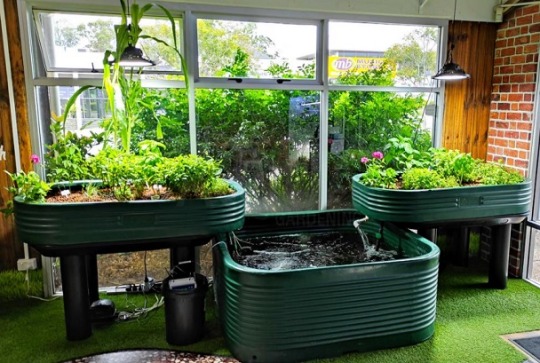
image source
So running the water from the fish through the plants growing substrate will on one hand feed the plants, as well as clean it for the fish to enjoy it again. So the system already closed a few loops there, making it more sustainable than just mere hydroponics. Also, the inclusion of microbes already offers a more diverse environment, bringing the system a bit closer to an ecosystem. But let's not get ahead of ourselves: Aquaponic systems still need close monitoring, as they are still a far cry from a self sustaining ecosystem of let's say a pond. Also, the water circulation / aeration is most likely going to require a pump, and depending on the exact setup of the system, maybe artificial lighting for the plants. All these aspects add to the energy requirement of the aquaponic system.
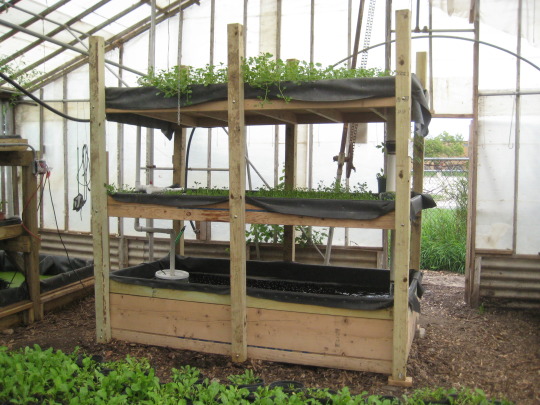
image source
A Truly Closed Loop? Consider the Food of the Fish!
When praising the sustainability of aquaponics, one thing that mustn't be ignored is the source of the fish food. Just like with the hydroponic systems, where the food for the plants or the fertilizer is considered, we can't ignore the feed we give to our fish to eat. If it is the same industrial feed, we may as well have kept to our hydroponics. Not true, since including fish already makes our system more diverse. So instead, let's continue in that same direction. What do fish eat? What is good for them? How can we grow that food ourselves?

image source
Making Your Own Sustainable Fish Food
Here I could probably start a number of individual posts, since talking about fish food is like opening up a can of worms. But fortunately, I already have a number of appropriate things written. Talking about worms, by the way, anyone who has been fishing knows that they are a favored delicacy, and anyone who composts will have no shortage of them. Since worms are mostly vegetarians, and many of us eat meat, it may have been a bit difficult to properly compost greasy, meaty, bony food wastes. That's where black soldier flies come in, whose larvae are also frequently mentioned for fish food. I still need to try growing those guys. As for green plants for the fish, duckweed makes also good fish feed, again something I have no experience with. What I do know, though, is spirulina, which is also super rich in nutrients, and I would be surprised if the fish didn't like it. So I can see throwing some composting worms, black soldier fly larvae, and spirulina into a blender, to make some great nutritious fish food. At the moment this is very theoretical for me, though.

image source
Don't Give Up the Soil Completely
So does this mean we should all focus on setting up our most sustainable fish-plant-compost combo cycles? Hells yeah! But please not at the expense of everything else! Soilless gardening, as exciting and revolutionary as it may sound, is still that: without soil. And let's face it: neither us, nor our beans and tomatoes, have evolved to live entirely without soil. That just seems wrong. Even in a small urban apartment it's worth having a bit of soil on your roof, balcony, or window sill, where you can dig your hands into a world of healthy microbial diversity on occasion. And if you do have the space, by all means, set up a pond, a dam, or another aquatic ecosystem, where fish, and frogs, and dragonflies, and numerous other species can live together without relying on our management. Apart from looking pretty, they will also provide food for us, that is nutritionally superior to anything industrially grown.
Sources: 1, 2, 3, 4, 5, 6, 7, 8
116 notes
·
View notes
Text
youtube
We visit a garden in Indonesia which has become a haven for butterflies.
Plants cover every surface and peek out from every nook at Ida Amal’s house in Tangerang, west of Jakarta.
A large rambutan tree creates shade as well as providing fruit for the house and the neighbourhood.
Ida built the house with the garden in mind, and plants have a home within the building and on the roof walkways as well.
There are food plants, a hydroponic setup, ornamentals, a hive of stingless bees – even a Eucalyptus and tulip bulbs being grown in a fridge to provide wintery conditions.
Ida experiments with everything. “I love every plant,” she says. She even got permission to cultivate the public park next door into garden space, and the many flowers and plants growing there provide a natural haven for butterflies.
She grows particular host plants on purpose, for example, lacewing vine for the Red Lacewing Butterfly.
An artist and educator, Ida shares photos of and information about her garden with a large online following.
She is keen to persuade others to each create a microclimate in their garden - no matter how small, it will combine with other gardens to form a larger microclimate that can reduce global warming and climate change.
“Gardening is not just planting but caring about the environment,” Ida says.
Featured species:
Rambutan (Nephelium lappaceum)
Lacewing Vine (Adenia heterophylla)
Red lacewing butterfly (Cethosia biblis)
Filmed in Tangerang, Banten
#gardening australia#solarpunk#indonesia#Tangerang#butterflies#garden#gardening#butterfly garden#Ida Amal#hydroponics#public park#park#Youtube
3 notes
·
View notes
Text
aughh also this is just me but hydroponics gives me super "body horror but for plants" vibes. I realize I'm adverse to a lot of technological futurism on the grounds that it doesn't resemble how organisms are "meant to/evolved to function", which I know is a knee-jerk naturalist argument, so instead I try to be objective.
But this idea that you can grow anything in a nutrient solution (like lab-grown meat cultures for "vegan meat!", hydroponics, and even feeding ourselves nutrient solutions like soylent) seems incredibly reductive to me. Growing anything in isolation seems more cost-prohibitive than integrating it within an environment where water and nutrients can be found from sources that play a part in growing not just the crop, but other essential species like trees for canopy, mycorrhizal systems that work with root systems to provide movement of nutrients, decomposers such as insects that naturally turn and enrich soil, animals that provide the nutrients for that enrichment.
I apply this same argument to growing lab meat and feeding ourselves nutrient-dense slop (not to mention the constipation), although those don't have as much of an environmental concern as it is spiritual for me. Removing ourselves from the cycle of life and our part as predators (and eventual decomposing food for other organisms) seems like it will only exacerbate our problems of over-consumption (After all, if we can make enough lab meat to meet demand, why not? It is cruelty free after all). There would be no appreciation for where meat comes from and what it takes to obtain meat. Meat grown in a lab further masks the resources it took to create it. We would be further from knowing where our food comes from.
I think people creating lab-grown meat and indoor greenhouses have the best intentions in mind, and these are fantastic technological advances that would help dense urban areas meet their food goals, *but* I do not think this is the future of all farming because in isolating our food sources, we also isolate ourselves from the rest of the world when I believe we should be integrating ourselves better with our environments.
19 notes
·
View notes
Text
From Japan to Iceland, futuristic vertical farms are starting to bloom

Indoor farming is a new and rapidly growing trend that has significant benefits over traditional agriculture methods, including increased efficiency and sustainability. Indoor farming can also help to combat climate change by reducing the amount of greenhouse gas (carbon dioxide, methane) released into the atmosphere and reducing the need for pesticides.
There are several different ways to do indoor farming, but the most common approach is to use hydroponic systems. These systems rely on water systems rather than soil to support plant growth, creating a controlled environment for the plants to grow in efficiently. An array of sensors designed specifically for this ensure that waste is minimized and resources are recycled whenever possible. Hydroponics also allows farmers to grow crops without dealing with pests or disease outbreaks, and it requires minimal land area compared to traditional agriculture methods. Because you essentially build the farm vertically, you can use places like former factories or warehouses.
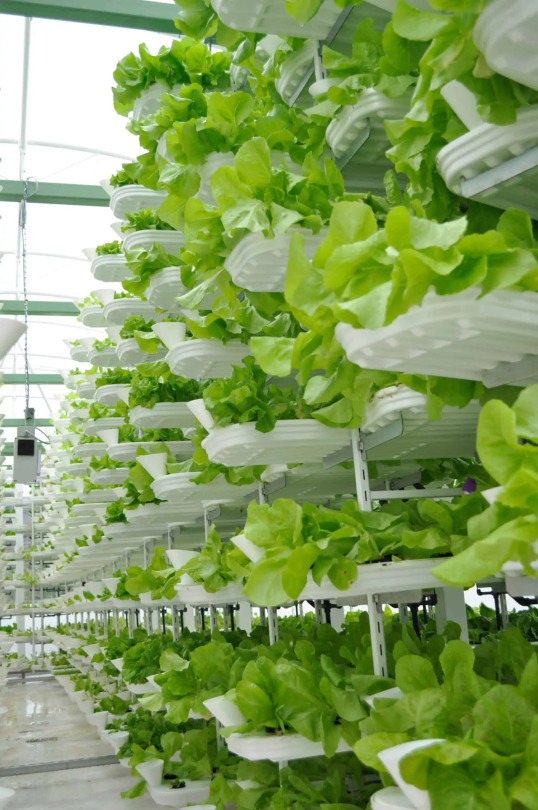
In the Shizuoka Prefecture, a facility that’s around 20,000 square feet (0.2 hectares) grows a whopping 12,000 lettuces a day (lettuce is excellently suited for this type of farm). Farmers set up the light regime for the plants (using LEDs), as well as the temperature and humidity level, and enjoy round the year crops. Not only is the area required for the yield much lower than with conventional methods, but the water usage is also lower (10-20 times lower).
More recently, a farm in Kyoto developed by a company called Spread became a record-breaking facility that also introduced bees to pollinate its strawberries, achieving stable pollination under LED conditions and showing that there’s plenty of unexplored opportunity within vertical farms.Image credits: Spread.
Singapore is also betting on vertical farms with one farm established in 2022 producing 500 tonnes of greens each year, in addition to its previous projects. Being able to grow food directly in urban areas means you can bring it to consumers quickly and inexpensively.
Meanwhile, Iceland is taking advantage of its ability to produce cheap, sustainable energy using geothermal sources to fuel a large vertical farm. Iceland has constantly had a problem of having to import food, and Iceland has one of the most expensive food markets in the world due to this. But Andri Bjorn Gunnarsson, founder and CEO of VAXA, the company behind the vertical farm, says Iceland also has some advantages that make it suitable for vertical farming.
(Source: ZME Science, November 9th 2022)
#green#indoor farming#hydroponics#industrial farming#farming#green technology#japan#iceland#singapore#mine#articles#science#news#solarpunk#agriculture
95 notes
·
View notes
Text


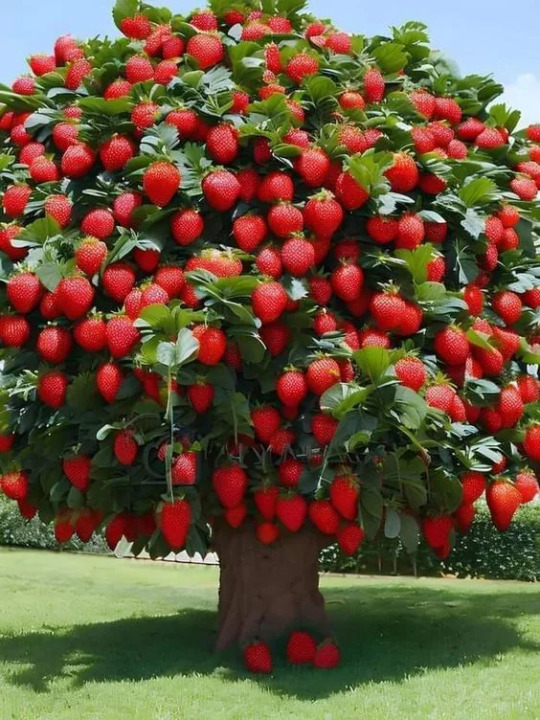

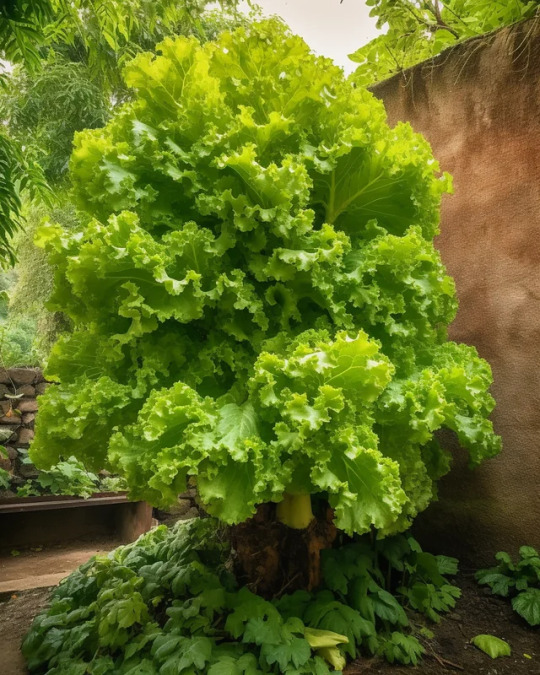
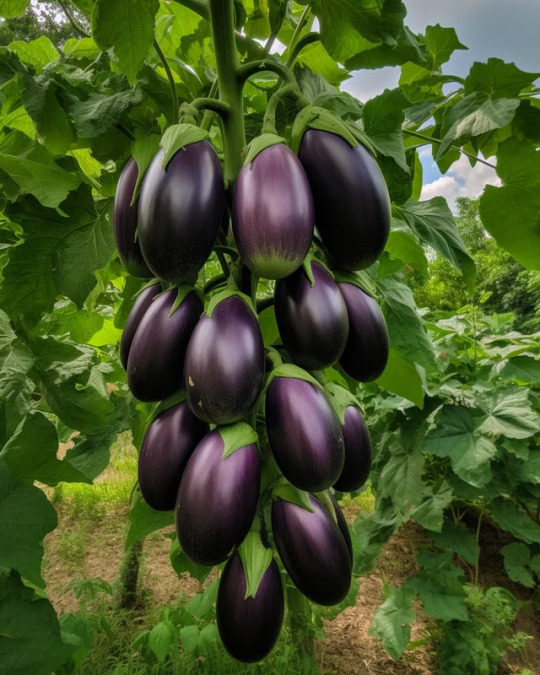
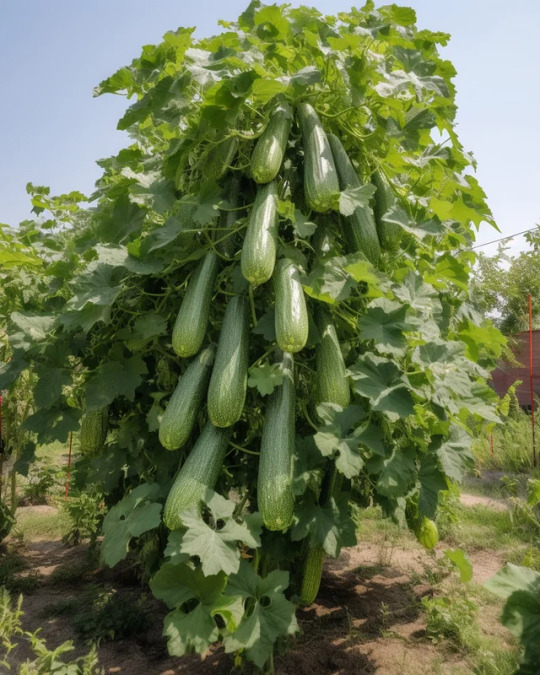
vertical farming...
Vertical farming is the practice of growing crops in vertically stacked layers.
It combines hydroponic farming techniques such as hydroponics, aquaponics and aeroponics, and controlled-environment farming aimed at optimizing plant growth.
......
Dikey tarım...
Dikey tarım ürünleri dikey yığılı katmanlarda ürün yetiştirme uygulamasıdır.
Hidroponik, aquaponik ve aeroponik gibi topraksız tarım tekniklerini ve bitki yetiştirmeyi en uygun yapmayı hedefleyen kontrollu-ortam tarımını birleştirir.
#türkiye#doğa#travel photography#travel destinations#travel#manzara#view#natural#europe#africa#Spotify
24 notes
·
View notes
Text
I realized it’s actually pretty fitting for my OC Taifo to have cats’ eyes, partly due to autism things.
I mostly gave him cat eyes because they’re fun to draw and can be super expressive.
But I’m thinking about how cats’ eyes work and it just suits him very well. I know the way my autism presents I have the ability to focus on one thing but only one thing at a time, which is also how cats’ eyes are structured (since they’re built to hunt). Since Taifo’s traits are very much based on mine, it’s a funny coincidence that he has eyes built to hyperfocus on things. Both his brain and eyes are suited for focusing on one task at a time.
It also just works well for his job and the climate he grew up in. He grew up closer to the planet’s equator, meaning he would’ve needed extra sun protection. His ability to change pupil shapes comes in handy in filtering light, and with the help of a little bit of charcoal dusting on his lashes, he basically never needs to wear sunglasses. Artificial lighting in Hydroponic gardens in space are also a harsh magenta hue with an extra dose of UV radiation to encourage plant growth, so the risk of eye damage is also heightened in this environment. Thankfully, Taifo has eyes perfect for protecting against UV light, and can spend hours in the hydroponic garden without getting too much eye strain and UV exposure. Obviously he still couldn’t stare directly into the sun with naked eyes, but he’s less likely to have his corneas burned by UV lights.
Now I just have to wonder; does he also have bad depth perception like a cat does, but with extra peripheral vision? 🤔
And what about the members of his species that have goats’ eyes? 🤔
TLDR:
My OC Taifo’s cats’ eyes are great for protecting his eyes from UV radiation and focusing on singular tasks.
9 notes
·
View notes
Photo

In an effort to provide passengers with amenities beyond transportation, Taiwan has chosen an unusual location for vertical farming, an underground metro station.
Located at capital city Taipei’s Nanjing-Fushing Station, the 40 square-metre ‘Metro Fresh’ hydroponic farm grows lettuce under LED lighting in a sterile environment to eliminate the use of pesticides and herbicides.
Smart farms are less labor intensive and use technology to increase yields and mitigate weather fluctuations.
"Right now our production yield is about 180 bags of lettuce, each bag is 200 grams. We can produce 180 bags of lettuce each week," says Winnie Chan, deputy manager at Unimicron Plant Technology.
The farming zone also serves educational reasons by enabling primary school kids to gain knowledge about environmental technologies and raise awareness, according to the Taipei Rapid Transit Corporation. Source: Yahoo (link in bio) #progress #food #taiwan https://www.instagram.com/p/ClBnCjJpNjJ/?igshid=NGJjMDIxMWI=
99 notes
·
View notes
Text
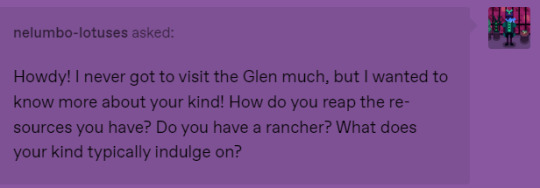
(Image id: a screenshot of a purple text post reading "
nelumbo-lotuses asked:
Howdy! I never got to visit the Glen much, but I wanted to know more about your kind! How do you reap the resources you have? Do you have a rancher? What does your kind typically indulge on?"
end id)
@nelumbo-lotuses
Hello Mason :> I'm not sure if you're the one in my world, but I'll do my best to answer. Before I last went to sleep, when the Glen was more intact, we did a fair bit of both ranching & farming. About half the Glen denizens engaged in small-scale farming of this kind, & everyone engaged in moss farming (more on this below). The chief livestock was - flips through a book - rams for milk & wool, & chickens for eggs & meat. I think some of the ranchers moved here, actually! There's one guy across the way who I keep hearing baaing noises from his window... As for what we indulge in, meat soups! Chicken, to be precise. Ram is too gamey unless you slow cook it.
Anyway, farming! I figure you'll be most interested in this subject. Sadly, I don't know everything, & my books that had the best info on this were lost in the floods. I do know the glenfolk used to farm a lot more before the Sun went away, but I couldn't tell you what plants. I think there is a seed vault somewhere - I hope it's still intact. But anyways - for as long as I can remember, farming has always been more like... small-scale gardening aided by phosphor lamps. Plants tend to grow pretty sickly unless they're the special variant we bred for low light, & even then they're still rather small. What we do grow is various nuts, root vegetables like potatoes & carrots, & of course, maize! While I love nuts, our maize was my favorite crop. We bred them to produce way more seeds than usual for both replanting & eating, & the seeds are delicious. The maize itself we made into bread! Tasty tasty seedbread :> I miss it, truth be told. They grow maize here in the Refuge, in special hydroponic bays, but the bread they make with it just isn't quite the same :< Hopefully with the Sun back & the Glen being slowly repaired, we'll be able to get some again, among other crops.
Now, I promised I'd mention moss farming, & I wouldn't dare leave it out. It's what I know most about, after all! Much like the phosphor shrimp that the Barrens bred for harvesting phosphor, the Glen bred special mosses that harvest phosphor from the soil & thrive in low-light environments. Best of all, they're bioluminescent - they glow!! Fortunately, we have another variant of moss, that mostly grows on the ground & on the outside of our structures, that we've bred for food. It's quite good, actually! A little sweet, even. Anyway, the glowing moss we harvest & store in these little terrarium lamps, so they can provide light for crops & things. It's really cool! I'm not mobile enough to return to the Glen, but I'm sure someone there could ship you a sample.
Hope that answers everything! It was nice to have a normal conversation. I'm kinda helping to solve a crisis at the moment, & this was a breath of fresh air. Would love to chat again sometime!
7 notes
·
View notes
Note
Okay, here's a thought: you've probably noticed from posts by now that I'm working on some original space-fantasy material and I just thought I'd throw this your way—I've noticed that in film and television interior design for starships and starbases with simulated gravity tends to exist on a single-axis spectrum from "Grand Faux-Marble Hotel" to "Metal Piping Everywhere," neither of which strike me as particularly good actual design ideas for a place that people are going to live in for extended periods, not when there's no real outside to go and spend time in. So I'm just curious if you have any thoughts on what good urban design would look like for, say, a starbase. How could perhaps green-space be brought in to create a feel of going outdoors in hallways, for instance? What other solutions do you think there could be for making a sealed environment like that look more like something real people would be able to thrive living in?
okay. so i did some googling as to what a star base is and I am still confused, but I will endeavour to do my best anyway.
First of all, the practicalities. They need oxygen, they need food. Guess what creates both of those? Plants! And you've heard me talk about hydroponics: it's a super water and nutrient efficient way to grow All Things Green and I imagine that a starbase or whatever would want to be as self-sufficient as possible and won't have a problem getting solar energy either direct to their plants or to power artificial UV lights that do just as good a job. Also, seeing as there are humans there breathing out carbon dioxide: basic evolutionary science says, get the plants in first, get them as numerous as possible, that way they make oxygen pretty much on their own and you're saved from having to cart the stuff in which is an expensive and dangerous process (carbon dioxide is a lot more inert and safer to transport: when near a fire it will put the fire out rather than Big Burn). You could also utilise human, um, waste products in some variation of hydroponics that's a bit more like aquaponics. Nutrient cycling. Or bring in some fish and just have aquaponics as well?
So that being said, you've got the required Green Stuff in order to feel like you're going outside. Green plants growing all up the walls and bright light and the sound of running water. Maybe it's light and humid enough to grow some sort of ground cover as well with stepping stones so it doesn't get too worn by passerby? You could definitely make hallways and hallways of this, because space is so limited just utilise anywhere you have to grow food. And it will mean the air is fresher as well. You can get design inspo for this by looking up anything along the lines of 'green building' on any image search or Pinterest. Faeriecore meets futuristic technology: my favourite kind of vibe. Plants in the bathrooms, wherever is practical really, what you really want to think is: everything has to be super efficient, because gravity simulation is no doubt expensive and energy intensive to run. No silly extra space like the Grand Faux Marble Hotel. PVC pipes are a lot lighter than metal and won't rust when you've got all your necessary salts running through them to feed your plants, but they're not the most attractive so you want green to cover them wherever possible. Think of the plumbing: you want everything to flow from source to sink as efficiently as possible, and no nutrient, water, etc to ever be wasted. And then, on top of this basic skeletal framework, somewhere that feels liveable. Blues and greens to calm the nervous system when you're so far away from actual soil. A basic compost plant going on somewhere that recycles some of the nutrients fed back into the little soil pellets used for hydroponics and the juices that run through as fertiliser. Lots of chemical testing but make it cute little glass or plastic probes that are super quick and you can test anywhere. Everything sealed off well for the inevitable day that gravity does fail, and you want to make sure you don't lose all your water and dissolved nutrients when that happens. You probably just make entire walls out of growing green things, honestly, not the structural ones but between most rooms this will do. Herbs growing on the kitchen side of the wall, that kind of thing. Mint in the hallways that you can just pull off and chew to freshen your breath: access to chewing gum and the like will be limited.
Anyway, hope that gives you a few ideas! What I love about urban design as opposed to just interior is it sees the inside and the outside, the buildings and their layout and surrounds as a whole system and it's easy to slot in the framework of how do we meet all of our users' needs within this system as a whole? And to do so you want to create an ecosystem. You want to include both practical needs and the need for beauty; efficiency not only in terms of resources but also accessibility (I assume your dwelling population are hard at work doing Starship Things and don't have time to rush back and forth in a poorly designed area); and diverse areas for a diverse set of users: in real life cities, think of animals as well as people. On a starship/starbase, you have the possibility of having to house aliens for a while. Where would they feel safe, have their needs met, and if miscommunication does occur and they break something, where and how would it have minimal impact?
7 notes
·
View notes
Text












Have spent the last few days diving back into playing the early access version of Timberborn. I played the same map twice, once with the default Folktails beavers, and a second time with the unlockable Iron Teeth beavers, whom I'd already unlocked the last time I was playing this game a lot.
The first playthrough was mostly re-learning how to play, as it's been a while (almost a year) since I last opened the game, and I barely played it that time.
There was the usual working through the tutorial to build the minimum stuff you need to survive and start building, and then I built. A lot. A lot a lot. My usual goal when playing a map is to get as much of it as I can green (watered) , and in this case I also wanted to build all-or-most of the items in the technology tree. At least of the non-decorative objects.
There's a lot of water management, in order to get water to places that it currently isn't (including getting it somewhere uphill). Complicated by the most recent addition to the game, badwater, which is full of toxic contamination (needed to produce explosives). There were two rivers on this map, starting in opposite corners. One of good water that runs down a large mountain and then across to the far side of the map, the main river my settlement is sited on. And then on top of a smaller mountain there's two badwater sources fuelling a river that runs along the side of the map, in the opposite direction of flow as the main river, and then floods a big chunk of one corner of the map before draining away. Also, for added entertainment, there's intermittent droughts, plus "badtides" where the main river briefly turns into badwater too. And you really don't want toxic sludge running through your city, poisoning your citizens and killing their crops! Thankfully you can build levees, dams, and floodgates to control the flow.




The Iron Teeth playthrough was interesting, as they have an almost entirely different technology tree than the Folktails, right down to having different crops (carrots vs kohlrabi, as the starter point). And it's not just a one-to-one re-skinning of buildings; they often have different buildings, and even things that are similar largely have entirely different meshes or level of function. Iron Teeth pumps can pump up higher distances by default, for example. Folktails can build windmills in addition to using water- or beaver-power. Iron Teeth have hydroponic gardens to grow mushrooms and algae. They ferment a lot of their foods before eating them, or process them into rations, while the Folktails prefer grilling, grinding, and baking. Folktails have aquatic farms that can plant cattails and spadderdock in the water; Iron Teeth use foresters to plan mangroves. But they can't plant maple trees and harvest maple syrup from them, as Folktails can.
One thing I like a lot about the game is that there's a lot of structures that count as "solid" and can be stacked. Like housing and warehouses, though "piles" aren't stackable for Folktails, but are covered, stackable structures for Iron Teeth. I basically built a big stack of housing and storage in a central area for my Iron Teeth; it's a nice solution to dealing with limited map space.




As a fan of city-building games where your only potential conflict is versus the environment, I highly recommend this one. It was already enjoyable when I first purchased early access a couple years ago, and it's definitely gotten better since. I'm probably going to go wild with it for a week or three once it officially releases.
3 notes
·
View notes
Text
Title: Harnessing Hydrosonics in Hydroponics: Boosting Cell Turnover for Healthier Urban Food Production Introduction: As urban populations continue to grow, the need for sustainable food production within cities becomes increasingly critical. Hydroponics, a soilless cultivation method, offers an efficient solution. When combined with the emerging field of hydrosonics, which involves the application of sound waves or vibrations, hydroponics holds the potential to revolutionize urban agriculture. By leveraging hydrosonics to enhance cell turnover and nutrient absorption, we can pave the way for healthier food production in inner city living environments. Understanding Hydroponics and Cell Turnover: Hydroponics involves growing plants in nutrient-rich water solutions, providing an optimal environment for their growth and development. Traditional hydroponic systems already offer numerous advantages, such as efficient resource utilization and year-round cultivation. However, maximizing cell turnover, the process of generating new cells to replace old ones, is key to ensuring plant vitality and nutrient absorption. The Role of Hydrosonics in Cell Turnover: Hydrosonics introduces sound waves or vibrations into the hydroponic system, aiming to stimulate plant growth and enhance nutrient uptake. By subjecting plants to carefully calibrated frequencies and amplitudes, hydrosonics can potentially influence cell division, nutrient flow, and root development, thereby promoting faster cell turnover. These acoustic stimuli can complement traditional hydroponic practices, unlocking new avenues for maximizing plant health and productivity. Benefits of Hydrosonics in Urban Agriculture: 1. Enhanced Nutrient Absorption: Hydrosonics can facilitate the movement of nutrients through the nutrient solution, ensuring efficient uptake by plant roots. By optimizing nutrient absorption, plants can maintain robust cellular activity and vitality. 2. Increased Root Development: Sound waves or vibrations applied through hydrosonics can stimulate root growth and branching, expanding the root system's capacity to absorb water and nutrients. This enhanced root development further contributes to improved plant health and nutrient uptake. 3. Accelerated Growth Rates: By promoting cell division and turnover, hydrosonics can potentially accelerate overall plant growth rates. This trait is particularly advantageous in urban agriculture, where limited space necessitates maximum productivity within a constrained environment. 4. Improved Crop Quality: The controlled application of sound waves or vibrations can potentially influence the physiological and biochemical processes within plants, leading to improved crop quality, such as enhanced flavor, color, and nutritional content. 5. Sustainable and Resource-Efficient: Hydrosonics, when integrated with hydroponics, aligns with sustainable urban agriculture practices. It optimizes resource utilization by reducing water consumption and nutrient waste, offering an environmentally friendly approach to food production. Challenges and Considerations: While the potential benefits of hydrosonics in hydroponics are exciting, there are still challenges to overcome. The optimal sound frequencies, amplitudes, and durations for different plant species and growth stages need further research. Standardized equipment and protocols tailored specifically for hydrosonics in hydroponics are still emerging, making it essential to collaborate with experts in the field to design and implement effective systems. Conclusion: Hydrosonics, the integration of sound waves or vibrations into hydroponic systems, presents a promising avenue for improving cell turnover and nutrient absorption in urban agriculture. By incorporating hydrosonics into hydroponics setups, inner city dwellers can cultivate healthier and higher-quality crops. As this field continues to evolve, further research, technological advancements, and collaborations will unlock the full potential of hydrosonics, contributing to sustainable food production and fostering a greener future in urban areas.
7 notes
·
View notes